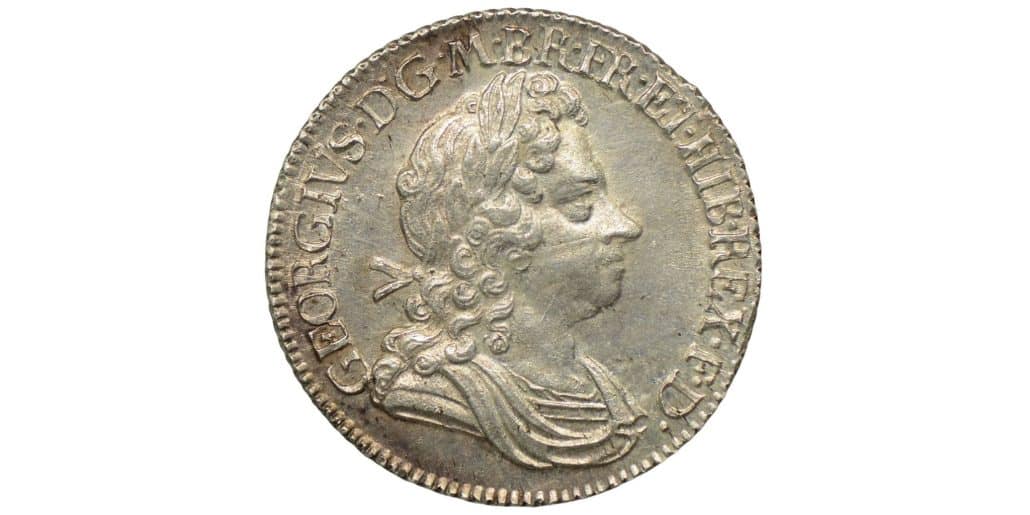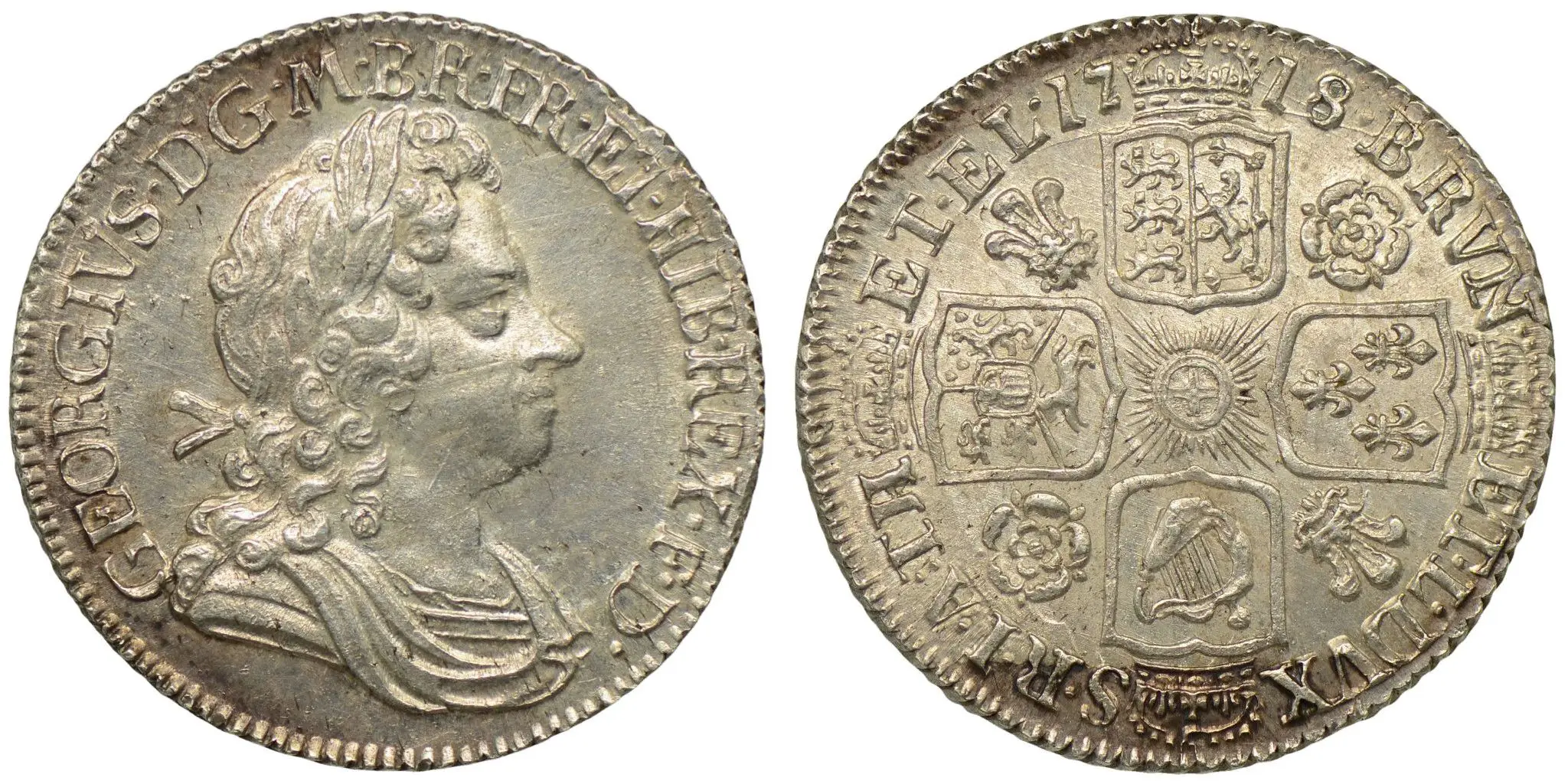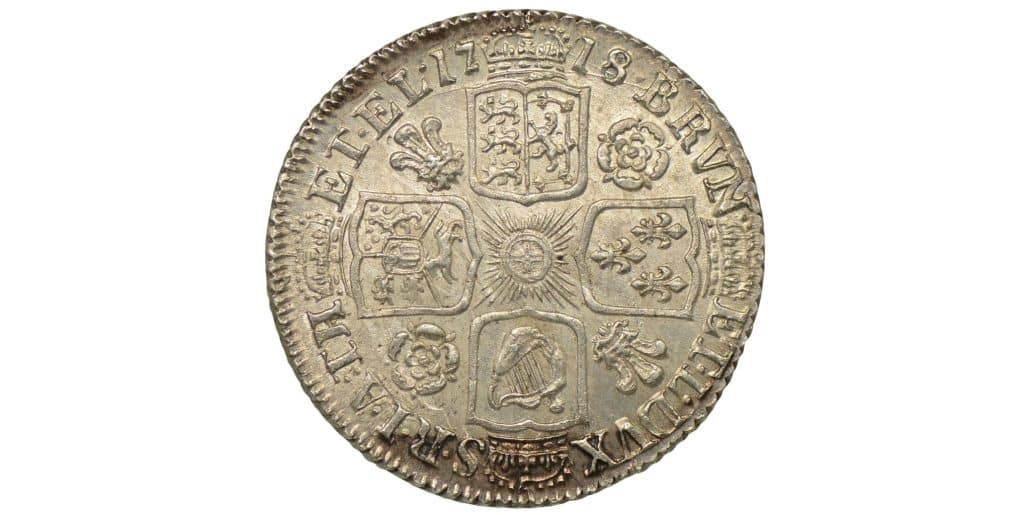Welcome to the fascinating world of numismatics, where coins hold tales of history, power, and wealth. In this article, we will unravel the story of the 1718 George I Shilling, a coin that captures the essence of an era and holds immense historical significance. With its intricate design featuring roses and feathers, this shilling stands as a testament to the reign of King George I and the House of Hanover. Join us on this journey as we delve into the details of this valuable coin and explore its historical context.
The Reign of George I: A New Era
The First Laureate and Draped Bust
At the helm of the British monarchy from 1714 to 1727, George I ushered in a new era known as the House of Hanover. As the first monarch of this dynasty, George I brought his unique style to the coinage of the time. The 1718 George I Shilling showcases his portrait, featuring a laureate and draped bust facing right. This depiction exudes regal sophistication, with intricate details that capture the essence of the king’s persona.
Toothed Borders and Legendary Surroundings
The shilling‘s design is further enhanced by toothed borders on both sides, adding a touch of elegance and distinction. Surrounding the bust, the legend reads “GEORGIVS DG M BR FR ET HIB REX FD.” This Latin inscription translates to “George, by the grace of God, King of Great Britain, France, and Ireland, Defender of the Faith.” The inclusion of these titles reflects the vast territories and influence held by George I during his reign.
The Design: Symbolism and Majesty
The Crowned Cruciform Shields
On the reverse side of the 1718 George I Shilling, we encounter a stunning display of heraldry. The coin features crowned cruciform shields, symbolizing the power and authority of the British monarchy. The arrangement of the shields creates a visually striking pattern, drawing the eye towards the center of the coin.
Roses and Plumes: A Delicate Balance
Within the angles formed by the cruciform shields, we find the delicate balance of roses and plumes. These floral and feather motifs add a touch of beauty to the coin’s design while symbolizing the union of England and Scotland within the reign of George I. The roses represent England, while the plumes stand for Scotland, illustrating the harmonious integration of these nations under one monarch.
The Garter Star and Date Flanking
The garter star in the crowned cruciform shields symbolizes the revered Order of the Garter. King Edward III founded this prestigious order in the 14th century, making it one of Britain’s oldest honors. George I’s inclusion of the garter star underscores his link to this esteemed order, boosting his authority and prestige.
Flanking the top crown, the date 1718 is split, elegantly framing the central design. This placement not only serves a practical purpose in dating the coin but also adds an aesthetically pleasing balance to the overall composition.
The Rarity and Value of the 1718 George I Shilling
Reflective Streaky Toning: A Mark of Authenticity
Each 1718 George I Shilling is a unique piece of history, with its own distinctive toning. Reflective streaky toning is a common characteristic of these coins, adding to their allure and authenticity. This toning is a result of the natural aging process, as the silver interacts with its environment over the centuries. The streaks of toning create a mesmerizing visual effect, enhancing the overall appeal of the coin.
Proficient Detailing: A Mark of Craftsmanship
The masterful craftsmanship exhibited in the shilling’s design is truly remarkable. The bust and King’s profile are intricately detailed, showcasing the skill and artistry of the minting process. Every line and contour of the portrait is expertly rendered, capturing the likeness of King George I with precision and finesse.
Encapsulated and Graded: MS 63
To preserve the integrity and value of these precious coins, many of the 1718 George I Shillings have been encapsulated and graded by respected institutions. One such institution, NGC (Numismatic Guaranty Corporation), has assigned a grade of MS 63 to select examples. This grade indicates that the coin is in Mint State condition, with only minor imperfections visible under magnification. Owning an encapsulated and graded 1718 George I Shilling adds an additional layer of assurance and value to any collection.

Conclusion: A Premier Example of History
The 1718 George I Shilling is not merely a coin; it is a tangible piece of history that encapsulates the grandeur and significance of a bygone era. From its toothed borders to its crowned cruciform shields, every detail tells a story of power, unity, and artistry. The delicate balance of roses and plumes symbolizes the harmonious integration of England and Scotland, while the garter star highlights George I’s connection to the prestigious Order of the Garter.
With its reflective streaky toning and proficient detailing, the 1718 George I Shilling stands as a premier example of numismatic craftsmanship. Encapsulated and graded, these coins hold immense value and serve as a testament to the rich history of the House of Hanover.
As collectors and enthusiasts, we have the privilege of preserving and cherishing these treasures from the past. The 1718 George I Shilling is a remarkable coin that not only holds monetary value but also serves as a window into the fascinating world of British history. Let us continue to celebrate and appreciate these historical artifacts, ensuring that their stories live on for generations to come.

